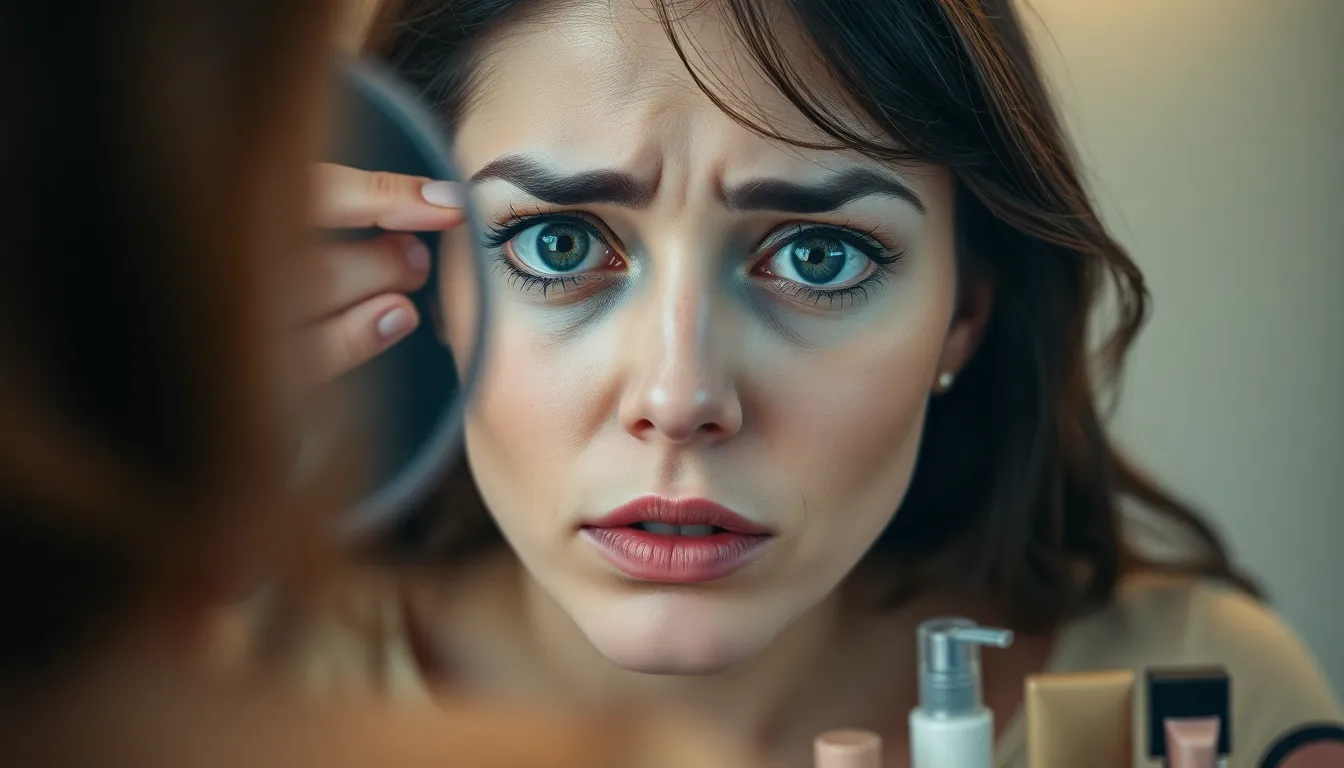Under eye fillers promise to banish dark circles and give a youthful glow. But what happens when that youthful glow turns into a questionable glow-up? For some, the journey to a fresher face can lead to unexpected detours, leaving them wondering if they signed up for a beauty treatment or a horror movie sequel.
Table of Contents
ToggleUnderstanding Under Eye Fillers
Under eye fillers aim to rejuvenate the appearance by reducing dark circles and restoring volume. Awareness of the pros and cons is crucial before making decisions about their use.
What Are Under Eye Fillers?
Under eye fillers consist of injectable substances designed to plump the skin and reduce hollowness. Commonly, hyaluronic acid serves as the base for these fillers, providing hydration and volume. Patients receive these injections to achieve smoother skin and a brighter look. Demands for these procedures continue to grow as more individuals seek a youthful appearance with minimal recovery time. Knowledge of the ingredients and their effects can inform potential users of the outcomes they might expect.
Common Reasons for Getting Under Eye Fillers
Individuals often turn to under eye fillers for a variety of reasons. Dark circles and hollows under the eyes typically prompt many to seek aesthetic treatments. Fatigue and aging contribute to the appearance of tired eyes, leading to a desire for a refreshed look. Others may pursue fillers to boost confidence in their appearance. Requests for less invasive procedures sometimes drive the popularity of these treatments as clients favor quick solutions with limited downtime. Understanding these motivations can shed light on the prevalence of under eye fillers in cosmetic practices.
Personal Experience

Many individuals share their journeys with under eye fillers, often highlighting initial excitement. Expecting a refreshed appearance, they seek solutions for darkness under their eyes. The goal centers on a youthful, vibrant look that seemingly eradicates tiredness or signs of aging.
Initial Expectations
Heard about the benefits from friends and online reviews, the anticipation builds before treatment. Expectations include smoother skin and enhanced volume in the under eye area. Individuals desire a rejuvenated reflection in the mirror, without bruising or significant downtime. Many believe the process to be straightforward, requiring minimal recovery. Thoughts swirl around the glowing results they envision, filled with happiness and confidence.
The Aftermath of Treatment
Experiencing treatment brings unexpected outcomes for some individuals. Swelling, bruising, or even an uncommon appearance can occur shortly after. Some find the effects do not meet initial expectations, leading to disappointment. Concerns arise regarding the long-term impact on facial aesthetics and overall appearance. Regret often surfaces, as they grapple with unforeseen changes that under eye fillers may bring. Many wonder if the outcomes were worth the risk, contemplating alternatives for future enhancements.
Consequences of Under Eye Fillers
Under eye fillers can lead to various consequences, impacting both appearance and emotional well-being.
Physical and Aesthetic Changes
Swelling commonly occurs post-treatment, making eyes appear puffy. Bruising may also develop, which can last several days. Some individuals find asymmetry in their features, causing an unbalanced look. Rarely, lumps or nodules may form under the skin, detracting from a smooth appearance. Additionally, overfilling can create an unnatural, exaggerated look that many seek to avoid. Such changes can lead to dissatisfaction, prompting individuals to seek corrective measures.
Emotional and Psychological Impact
Frustration often arises when expected results differ significantly from reality. Regret may follow the realization that the pursuit of a perfect look didn’t yield the desired effects. People might experience lowered self-esteem, feeling disappointed by their appearance. Anxiety could increase as individuals consider additional treatments to rectify issues. Stress often arises from the pressure to conform to beauty standards, amplifying feelings of inadequacy. Such effects demonstrate that decisions around aesthetic enhancements require careful consideration.
Alternative Solutions
Exploring alternatives can offer new paths to achieve desired results without the pitfalls associated with under eye fillers. Various options exist, catering to different preferences and concerns.
Non-Invasive Treatments
Non-invasive treatments provide effective solutions for dark circles and under-eye hollowness. Options like topical creams, which contain ingredients such as retinol and vitamin C, improve skin texture and diminish discoloration. Chemical peels gently exfoliate the skin, promoting collagen production. Microneedling, another popular choice, enhances skin elasticity by creating micro-injuries that stimulate healing. Moreover, laser therapy targets pigmentation and fine lines, resulting in a rejuvenated appearance. Each of these treatments requires minimal downtime and poses lower risks compared to fillers.
Surgical Options
Surgical options deliver more permanent results for individuals seeking significant changes. Blepharoplasty, or eyelid surgery, addresses excess skin and fat around the eyes, enhancing the overall contour. Candidates often experience a noticeable reduction in bags and sagging. Even though the procedure involves anesthesia, recovery time varies from a few days to weeks. It’s essential for candidates to have realistic expectations and seek consultations from board-certified surgeons. Furthermore, ensuring proper aftercare maximizes healing and effectiveness of the procedure.
Expert Opinions
Understanding expert opinions on under eye fillers offers valuable insights into possible outcomes. Professionals emphasize that while these fillers can enhance appearance, risks exist.
Dermatologists’ Insights
Dermatologists caution that not every result is positive. Post-treatment complications like swelling or bruising can occur frequently, affecting satisfaction levels. Many experts recommend consulting with qualified practitioners who specialize in facial anatomy. They highlight that individual anatomy plays a crucial role in determining appropriate filler application. Assessing skin type and facial structure helps in creating tailored treatment plans that maximize effectiveness. Recommendations also include managing patient expectations to avoid disappointment with results.
Patient Testimonials
Patient experiences reveal a wide range of outcomes with under eye fillers. Many individuals express initial excitement about achieving a more youthful look. Nonetheless, dissatisfaction often arises due to unexpected side effects or results that don’t align with their expectations. Some describe feeling self-conscious about unevenness or lumps, which detracts from their confidence. Others share stories of seeking corrective treatments to address these issues. Recurrent themes include the desire for more natural results and the importance of thorough research prior to procedures. Each testimony emphasizes the need for a well-informed decision-making process to mitigate regret.
The journey with under eye fillers can be unpredictable and fraught with challenges. While many seek a youthful glow and smoother skin, the reality may not always align with expectations. Disappointment and regret can overshadow initial excitement when results fall short or lead to unwanted side effects.
It’s crucial for individuals to weigh the potential risks against the benefits before committing to such treatments. Exploring alternative options may provide safer avenues to achieve desired results without the pitfalls associated with fillers. Ultimately, informed decision-making and realistic expectations are essential for anyone considering enhancements to their appearance.




